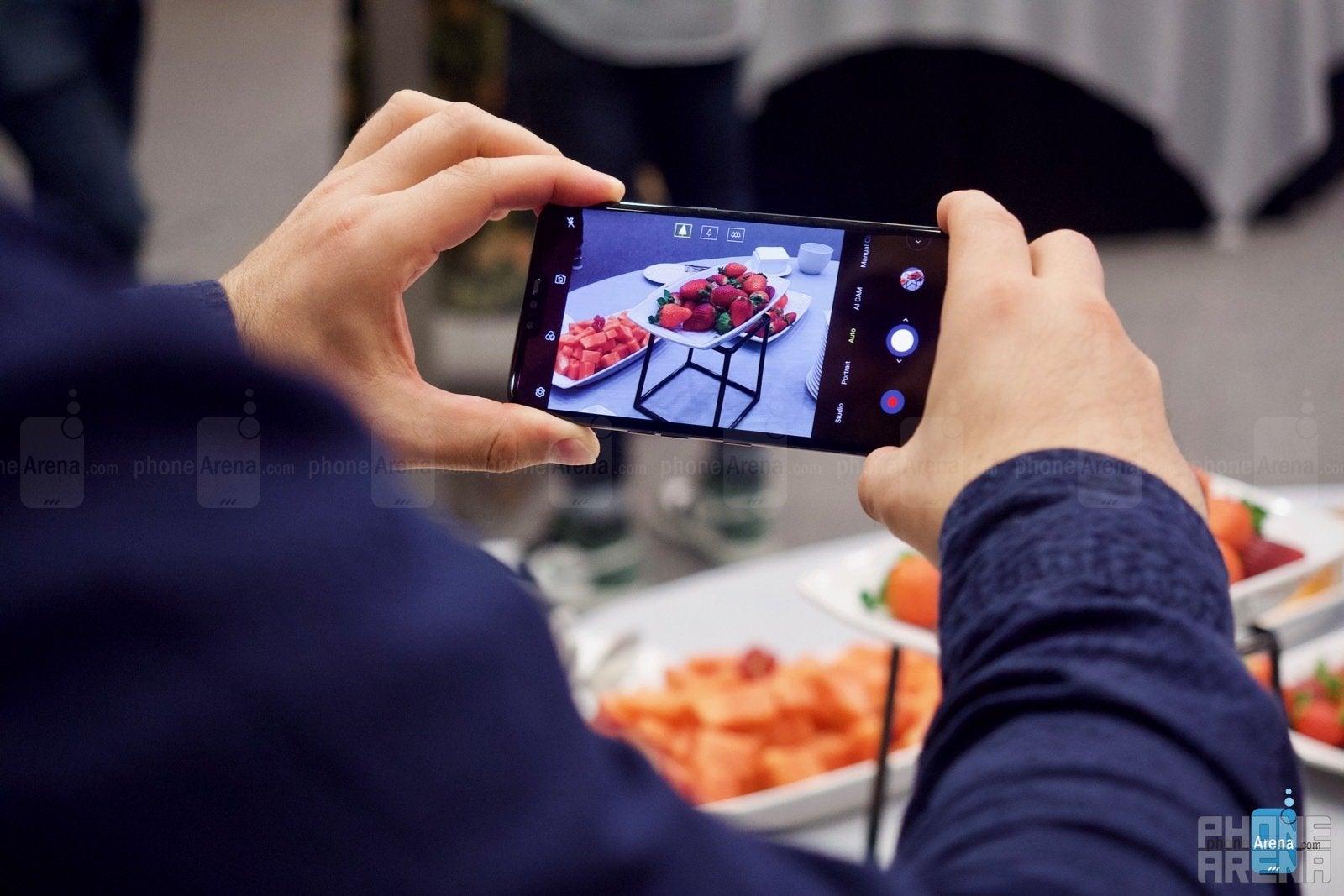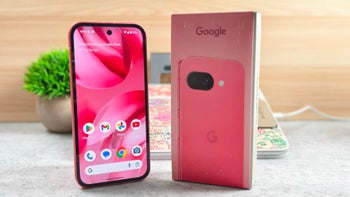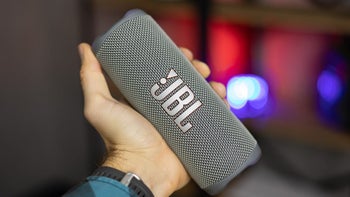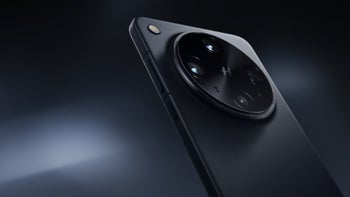Hands-on with the LG V50 ThinQ and its... dual display case

The LG V50 ThinQ will be the company's first 5G smartphone – and one of the first 5G handsets to launch in the US. It is also shaping up as one of its more peculiar recent phones, as it will be offered alongside a detachable display that effectively doubles the available screen space. But will this be enough for the V50 to compete against the few yet fierce 5G-capable competitors? Will it be a worthy rival to the Samsung Galaxy S10 5G? At MWC 2019, we examined the V50 from up close to find out.
Built on a solid foundation
I've been using the LG V40 for a couple of months now, and the V50 felt very familiar when I picked it up. The two phones have the same footprint and share the same 6.4-inch display size, while their cameras are practically identical in terms of specs and optical properties. The V50 is slightly thicker and heavier, however, which is expected given the fact that it has a 20% larger battery (4000mAh) and a new vapor chamber cooling system. As a result, the cameras are now flush with the glass back instead of sticking out.
Will twice the screen space equal twice the action?
The LG Dual Screen accessory is the company's answer to the rising trend of foldable smartphones. It doesn't look as elegant or as futuristic as the foldable phones announced so far, but we expect it to be a significantly cheaper alternative. Basically, the Dual Screen attachment resembles a folio case, but with a few key upgrades. One, of course, is the extra OLED screen on the inside, powered by the V50's battery. It is slightly smaller at 6.2 inches and of lower resolution than the main one (1080 x 2060 vs 1440 x 3120 pixels), but these differences didn't bother us during our brief testing. Another notable addition is the hinge mechanism that snaps at angles of 107 and 180 degrees – suitable for gaming and for side-by-side multitasking, respectively.
What is much harder to ignore is the gap between the screens, so the experience isn't as seamless as it would be with other, more expensive foldable smartphones. But then again, LG's solution can be detached at any time, in case you simply want to go about your day without a chunky handset weighing you down.
So, what can the LG Dual Screen do? While we didn't have the time to test every single use case LG had in mind, we were able to familiarize ourselves with the concept of using the accessory for gaming. In a nutshell, one of the screens displays the gameplay while the other is transformed into a gamepad. Different button layouts are available, including ones designed for racing, fighting, and casual/platform games. As far as compatibility goes, games that support physical controllers should be playable.
LG's Dual Screen case also enables side-by-side app multitasking. For example, you can have your favorite IM service running on one screen and Google Maps or a web browser opened on the other. In the camera app, the second screen can act as a floodlight for selfies or as a larger preview window for the pictures you take.
Upgraded speakers, portrait videos
While the new LG G8 comes with a screen that doubles as a speaker, the LG V50 relies on a more traditional approach. It has a stereo speaker setup, with one 1.3W speaker at the bottom and a 0.7W one inside the earpiece. The Boombox speaker design we first saw on the LG G7 is also in full effect here. While we didn't have the opportunity to perform thorough testing, we can confirm that the V50 gets quite loud.

As we mentioned above, the two front and three rear cameras on the V50 are pretty much identical to those on the V40. What's new, however, is the camera interface, which is now laid out similarly to those of Apple and Samsung. It's a change we don't mind. And a new video mode allows you to apply bokeh effects in videos while recording with the rear camera. We gave this one a shot and it worked, but again, more testing is needed before we give it a thumbs up.
Expectations
The LG V50 is looking like one highly capable smartphone. With the Snapdragon 855 chip, Android 9 Pie, and those five cameras on board, it could be a worthy alternative to Android heavyweights, including the Galaxy S10 5G. Especially if it is priced competitively.
But it isn't without its weaknesses. For starters, the V50 doesn't do much to stand out, and to make matters more confusing, LG chose not to equip it with innovations found on the G8, such as the front-facing ToF camera and a screen doubling as a speaker. Sure, there's the optional Dual Screen attachment, but looking at its limited list of practical applications, we don't see it as more than a novelty. It isn't shaping up as something that many people would want to own and use regularly.
But from a business standpoint, all of this makes sense. LG says that it based the V50 on the V40 to ensure reliability, but we're inclined to believe that the company also wanted to develop a 5G phone with little effort and as quickly as possible. After all, we are now witnessing the first wave of 5G smartphone announcements, and LG surely wanted to be part of it. At the same time, the availability of 5G will be limited for many months ahead, so the demand for 5G devices would need time to pick up. Perhaps LG couldn't justify the investment that building a 5G phone from the ground up would have required.
Pricing and release date for the LG V50 haven't been announced yet. It will be released on Sprint first, but surely only after the carrier's 5G network goes live within the first half of 2019.












Things that are NOT allowed: